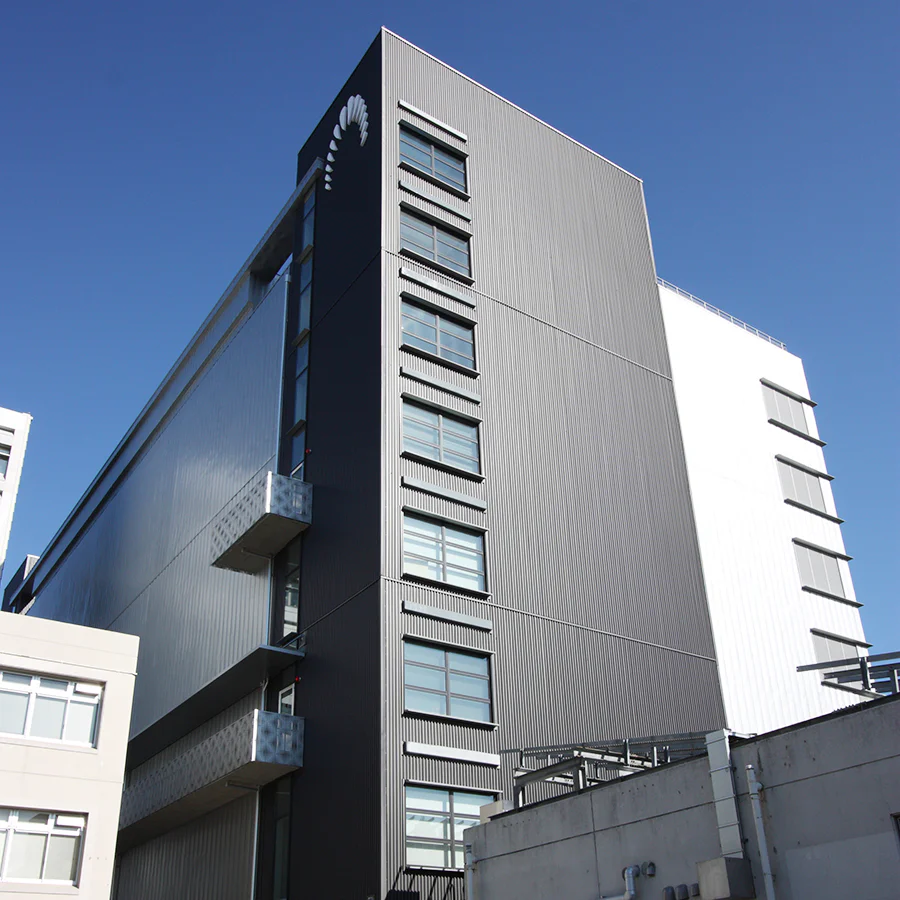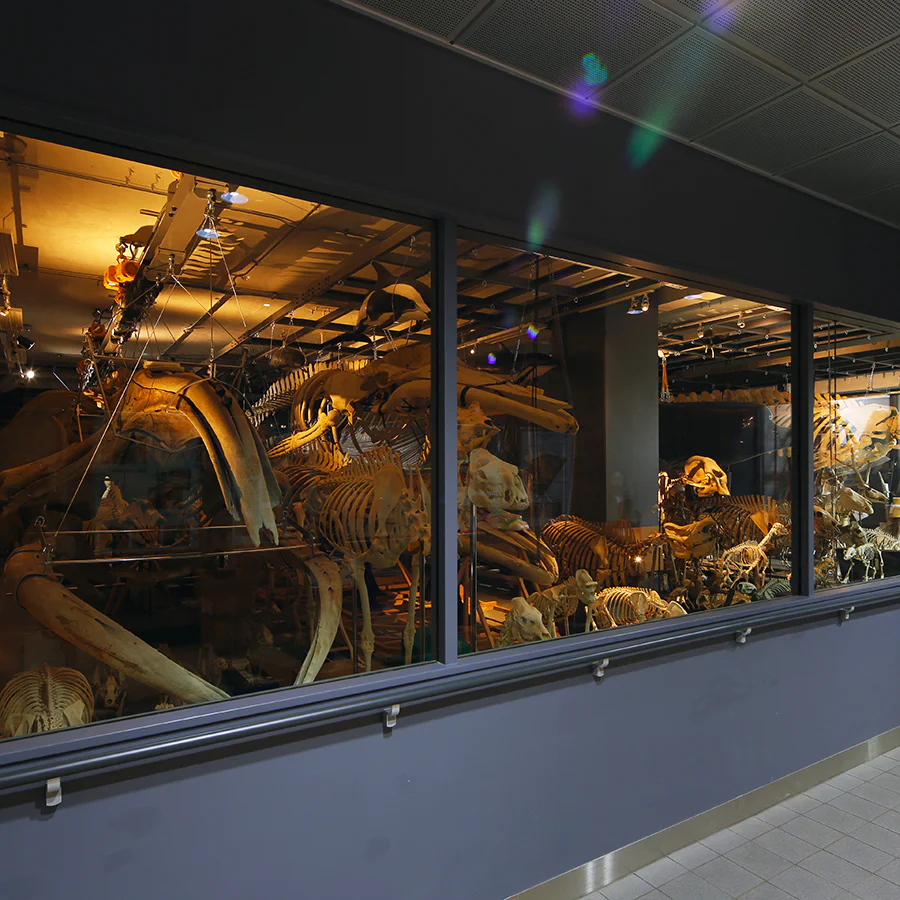Natural History Collection Wing
Overview
Completed in the spring of 2011, this facility was established to house and preserve the National Museum of Nature and Science's collection of specimens and materials. The specimen rooms in the Natural History Collection Wing currently house specimens
and materials from the museum's four research departments: Zoology, Botany, Geology and Paleontology, and Anthropology.
The wing features a flexible, user-friendly floor plan and is equipped with climate control tailored for the specimens, a gas fire-suppression system, large liquid-immersion specimen rooms, and a freight elevator. Additionally, the first floor includes
a public viewing area offering a glimpse into one of the specimen rooms.
The building also incorporates a seismic isolation system to protect its valuable collection of specimens and materials in the event of an earthquake.
The key features of the specimens and materials housed in each research department are outlined below.

Department of Zoology
We house a collection of over 2 million specimens from nearly every animal group, ranging from prepared slides of mites less than 1 mm long to the complete skeletons of whales measuring several meters. This collection grows by tens of thousands of items each year, thanks to ongoing research and new acquisitions. The specimens include taxidermy mounts and skeletal specimens of mammals and birds, dried insect specimens, and liquid-preserved specimens of marine animals and arachnids, each managed with appropriate preservation methods in a storage environment tailored to its specific requirements.
Department of Botany
A portion of the Department of Botany's seed plant collection is housed in the Natural History Collection Wing.
Department of Paleontology and Anthropology
This department conducts research on specimens and materials that help us understand the origin and evolution of all life on Earth, including humans. Three research groups share the responsibility of studying a wide variety of fossils that record the
3.5-billion-year history of biological change, as well as human skeletal remains excavated from archaeological sites. In addition, specimens and materials collected through these studies are organized into databases to promote their use in research, education,
and exhibitions.
Department of Science
This department collects specimens and materials to deepen our understanding of the Earth and the universe. Based on the natural sciences that explore the fundamental principles of the Earth and space, the department conducts research on a wide range of subjects. Its collections include rocks and minerals that make up the Earth and other planets, observational and experimental instruments used to study the Earth and the universe, and materials related to theoretical research forming the foundation of the natural sciences.
Visiting the Natural History Collection Wing
Main Exhibits on Display
Visitors can look through a glass window to see the collection housed in the "Large Animal Skeletons and Fossil Specimen Room" on the first floor of the Natural History Collection Wing. The collection primarily features the skeletons of large animals,
such as whales and elephants.
You can view videos and panels introducing the National Museum of Nature and Science's specimen materials and research activities.

Notes
To minimize the impact on specimens, the lighting is kept dim.
Photography is allowed. However, please observe the following three precautions.
- No flash photography.
- Photography for commercial use requires prior permission.
- Refrain from taking photos when staff are working in the specimen room.
Viewing Space
Located on the first floor of the Natural History Collection Wing, this area allows visitors to view the specimen storage area through glass, with a focus on the skeletons of large animals such as whales and elephants. Additionally, videos and panels present information on other floors of the building, storage facilities on the grounds, as well as the Museum's research activities. While museums are often associated only with their exhibition facilities, we hope that by viewing this space, you will gain a broader understanding of the museum's collection, preservation, and research activities.

Location of the Viewing Space
Location of the Viewing Space - Accessible through the Tsukuba Botanical Garden.
It is located to the left of the Mountain Grassland area (Highland Type, w9).
For more details, please refer to the Tsukuba Botanical Garden's "Overview and Garden Map."
Please note that visitors are required to pay the “Tsukuba Botanical Garden's Admission Fee.”